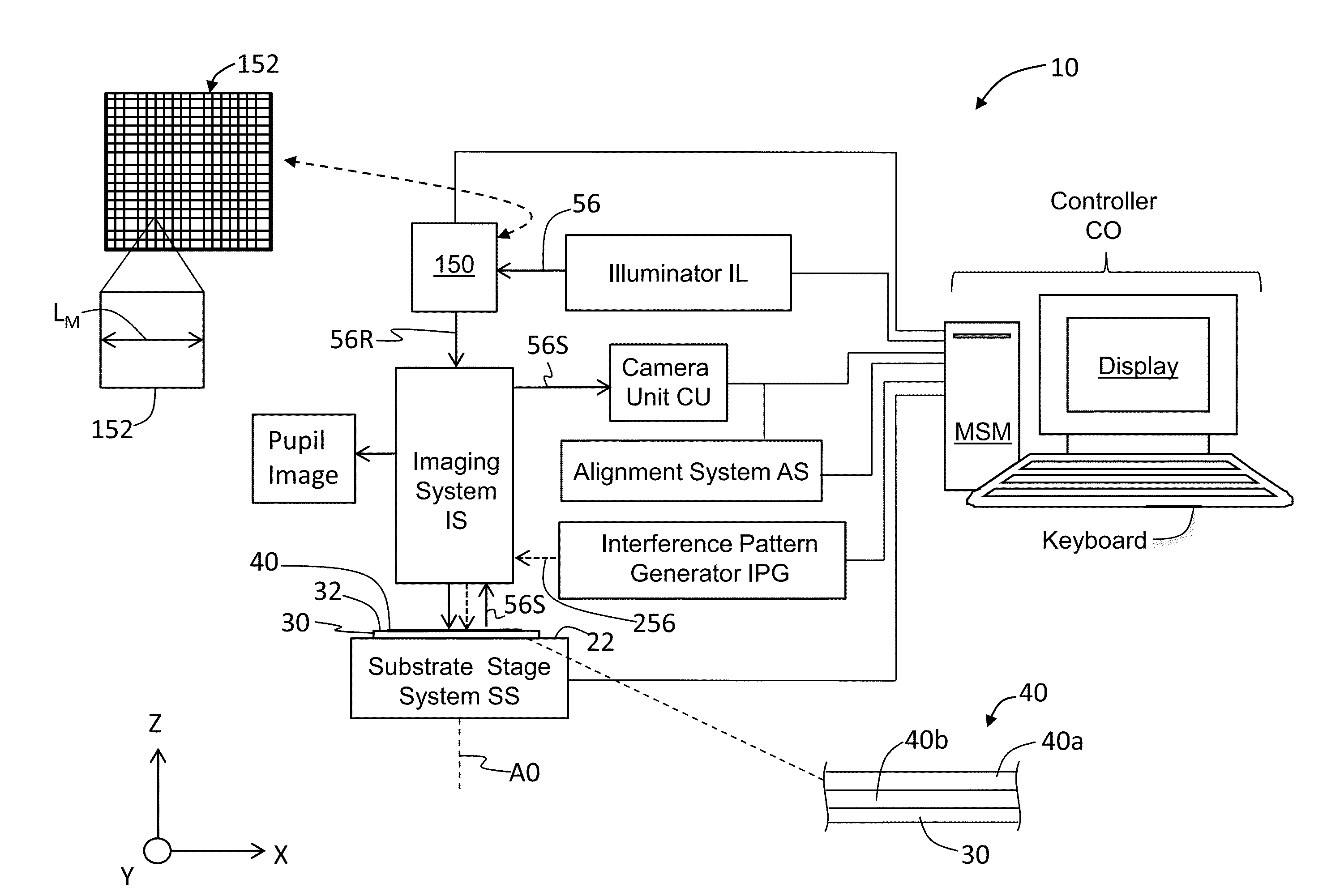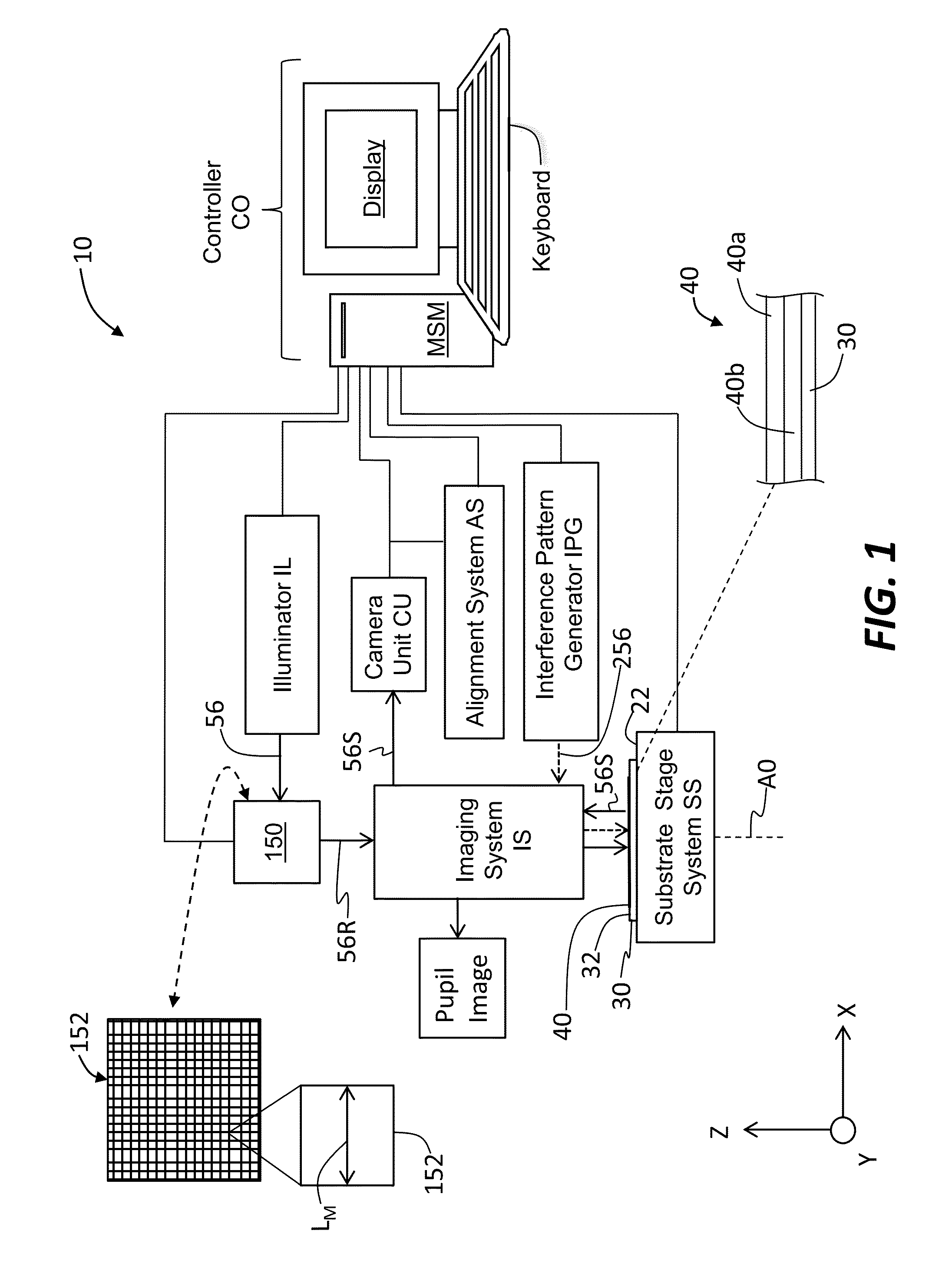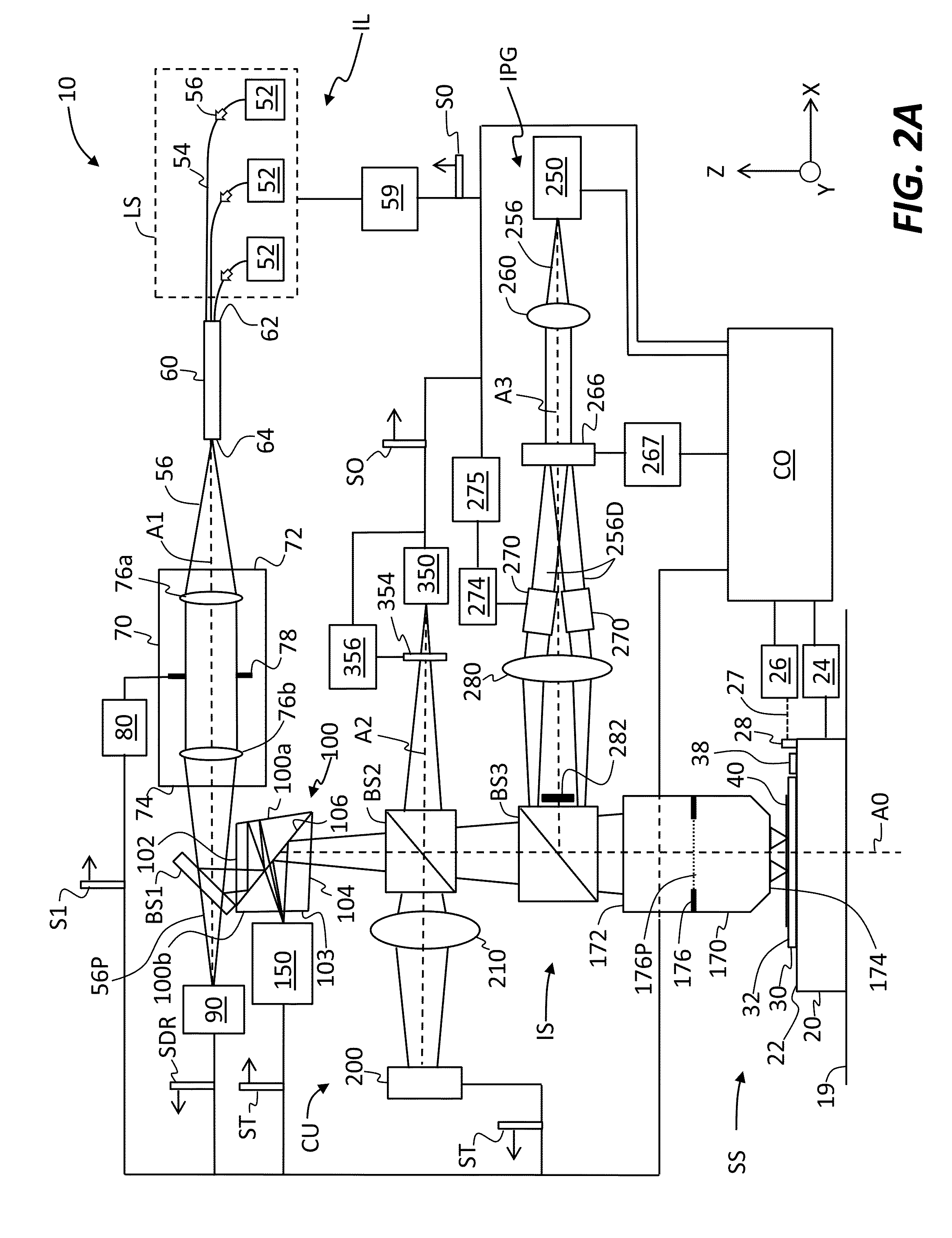Apparatus and method of direct writing with photons beyond the diffraction limit
a technology of photons and diffraction limits, applied in the field of lithography, can solve the problems of euv lithography systems not being commercially viable, the inability to keep reducing the fundamental material limitations of the minimum geometry of ic chips, etc., and achieves the effects of low contrast, low cost, and high contrast ratio
- Summary
- Abstract
- Description
- Claims
- Application Information
AI Technical Summary
Benefits of technology
Problems solved by technology
Method used
Image
Examples
example
[0221]An example apparatus 10 has a DMD-based image transducer 150 with micro-mirrors 152 as pixels having a center-to-center spacing SC of 10.8 microns, an inhibition wavelength λ2=532 nm, and a numerical aperture NA=0.9 for objective lens 170. The spacing SF of fringes 160X and 160Y at substrate 30 is given by:
SF=λ / 2NA=(0.532 microns) / (2×0.9)=0.2956 microns
The inhibition fringe spacing SF is equal to the DMD pixel size L′M=LM / M, where M is the de-magnification of objective lens 170. Thus,
L′M=(10.8 microns) / M=0.2956 microns
The magnification ratio M is therefore:
M=10.8 / 0.2956=36.541
Assuming the resolution R is 1 / 20 of the substrate pixel size, which is commensurate with experimental results, the minimum feature size LP that can be imaged is given by:
LP=(0.2956 microns) / 20=14.8 nm.
Optical Modelling
[0222]FIG. 3 shows a small segment of the crossed-fringe interference image 158 as formed at substrate 30 or in photoresist 40 deposited thereupon. The regular pattern of dark spots 300D is...
PUM
| Property | Measurement | Unit |
|---|---|---|
| inhibition wavelength | aaaaa | aaaaa |
| inhibition wavelength | aaaaa | aaaaa |
| size | aaaaa | aaaaa |
Abstract
Description
Claims
Application Information
 Login to View More
Login to View More - R&D
- Intellectual Property
- Life Sciences
- Materials
- Tech Scout
- Unparalleled Data Quality
- Higher Quality Content
- 60% Fewer Hallucinations
Browse by: Latest US Patents, China's latest patents, Technical Efficacy Thesaurus, Application Domain, Technology Topic, Popular Technical Reports.
© 2025 PatSnap. All rights reserved.Legal|Privacy policy|Modern Slavery Act Transparency Statement|Sitemap|About US| Contact US: help@patsnap.com



